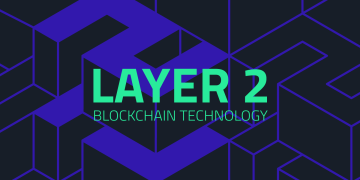As blockchain technology becomes increasingly integrated into enterprise infrastructure—whether through digital identity systems, supply chain management, decentralized finance (DeFi), or tokenized assets—businesses are discovering not only the opportunities of decentralization but also its complexities. Among the most pressing issues are data privacy and security. While blockchain offers inherent advantages like immutability and transparency, it also introduces novel risks and regulatory tensions that enterprises must proactively navigate.
This article explores the evolving challenges enterprises face in managing data privacy and security within blockchain environments and outlines strategic approaches to mitigate these risks while leveraging the technology’s benefits.
1. The Dual Nature of Blockchain: Transparency vs. Privacy
A defining characteristic of public blockchains is transparency. Every transaction is recorded on an immutable ledger, visible to all participants. While this openness enhances auditability and trust, it creates tension with enterprise needs for confidentiality and compliance with privacy laws like GDPR, CCPA, and others.
Key privacy-security tensions:
- Public visibility of sensitive data: Storing personal or confidential business data on-chain can result in unauthorized exposure.
- Irreversibility of data: Blockchain’s immutability conflicts with “right to be forgotten” provisions under GDPR.
- Pseudonymity vs. true anonymity: While users may transact via anonymous addresses, sophisticated analytics can often link them to real-world identities.
- Decentralized control: Without a single controlling party, coordinating consistent privacy and security policies is difficult.
As blockchain adoption grows, enterprises must adapt their privacy and cybersecurity strategies accordingly.
2. New Security Challenges Introduced by Blockchain Integration
Blockchain changes the traditional security model in several ways, exposing businesses to new vectors of risk:
A. Smart Contract Vulnerabilities
Smart contracts are self-executing code deployed on-chain. Errors or exploits in these contracts can lead to irreversible data loss or theft.
- Example: The 2016 DAO hack on Ethereum exploited a smart contract bug, draining millions in ETH.
- Enterprises must audit and formally verify smart contracts before deployment.
B. Key Management and Wallet Security
Blockchain-based systems rely on private keys for access. If a private key is lost or stolen, access to assets or data is permanently lost.
- Employees may misuse or mishandle keys.
- Hardware wallets, multi-signature protocols, or enterprise-grade custody solutions are necessary for mitigation.
C. Identity Spoofing and Sybil Attacks
In decentralized environments, attackers can spin up multiple fake identities to overwhelm voting systems or manipulate governance mechanisms.
- Identity authentication and access controls must be tightly integrated into enterprise blockchain solutions.
D. Layer 2 and Cross-Chain Risks
As enterprises adopt cross-chain solutions or Layer 2 scaling (e.g., rollups, bridges), they face complex interoperability and security risks.
- Many recent DeFi exploits have occurred at the bridge level.
- Enterprises should assess third-party protocol risks in due diligence processes.
3. Data Privacy in Blockchain: Key Compliance and Architectural Challenges
A. GDPR and the “Right to Be Forgotten”
Public blockchains, by design, do not allow data erasure. Once information is recorded, it becomes immutable and permanent.
- Implication: Storing personal data on-chain could violate Article 17 of the GDPR.
- Solution: Store sensitive data off-chain and only reference it on-chain using cryptographic hashes.
B. Data Minimization Principles
Under data protection laws, businesses are required to collect and process only the minimum data necessary.
- Blockchain protocols must be designed to exclude unnecessary identifiers and ensure only essential transaction data is published.
C. Jurisdictional Conflicts
Decentralized systems often span multiple countries, each with their own privacy regulations.
- Enterprises must track where data is processed and stored, even in decentralized networks.
- Data localization and node governance become critical topics in multi-jurisdiction deployments.
4. Enterprise-Grade Solutions to Privacy and Security
Enterprises looking to harness blockchain while maintaining high privacy and security standards can deploy the following strategies:
A. Hybrid and Permissioned Blockchains
Use of private or consortium chains allows businesses to control access to sensitive data while leveraging blockchain’s immutability and auditability.
- Examples: Hyperledger Fabric, Quorum, R3 Corda
- Access controls and role-based permissions enable regulatory compliance.
B. Off-Chain Data Storage with On-Chain Hashing
Instead of putting data directly on the blockchain, store it securely off-chain (e.g., in encrypted cloud storage or IPFS) and place only a hash of the data on-chain.
- Ensures integrity while preserving privacy
- Enables data updates or deletions without violating immutability
C. Privacy-Preserving Technologies
Several cryptographic techniques can enhance blockchain privacy:
- Zero-Knowledge Proofs (ZKPs): Allow verification of a transaction or fact without revealing the underlying data.
- Homomorphic Encryption: Enables computation on encrypted data.
- Secure Multi-Party Computation (MPC): Allows parties to jointly compute a function without sharing their inputs.
These are increasingly being integrated into enterprise-grade protocols to ensure confidentiality.
D. Decentralized Identity (DID) and Self-Sovereign Identity (SSI)
Blockchain-based identity solutions can give users control over their personal information while allowing businesses to verify credentials.
- Enables KYC-compliant identity without central data storage.
- Improves user authentication and reduces fraud.

5. Governance and Policy Considerations
As enterprises deploy blockchain solutions, they must also establish internal governance frameworks and policies:
- Smart contract review committees for security and legal compliance
- Internal key management procedures
- Incident response plans for blockchain-specific breaches
- Training programs to educate employees on decentralized technologies and secure usage
- Ongoing regulatory monitoring to stay compliant with global data protection laws
Security and privacy in blockchain is not a one-time setup—it requires continuous adaptation and cross-disciplinary collaboration between IT, legal, compliance, and business units.
6. Case Studies and Real-World Applications
IBM and Maersk (TradeLens)
A permissioned blockchain network for global trade. It uses cryptographic proofs and permissioned access to protect sensitive shipping and customs data, ensuring compliance with trade secrecy laws.
JPMorgan’s Onyx Platform
A blockchain system for interbank payments and tokenized assets. It integrates strict access control, off-chain settlement, and regulatory reporting features to align with banking regulations.
Healthcare Blockchain Systems
Companies like Guardtime and Healthereum leverage blockchain to ensure data provenance, tamper-evident logs, and patient consent tracking, without exposing private health records on-chain.
Conclusion
Blockchain brings transformative potential to the enterprise world—but also redefines how organizations must think about data privacy and security. While it enhances transparency, trust, and data integrity, it also introduces new risks that traditional models are not equipped to handle.
To address these emerging challenges, enterprises must:
- Adopt privacy-preserving architectures
- Use hybrid blockchain models suited to regulated environments
- Implement zero-trust security frameworks for decentralized systems
- Stay ahead of regulatory changes through compliance-driven design
- Invest in cryptographic innovation and technical expertise
In the coming years, enterprise success in blockchain adoption will not only depend on innovation and efficiency—but also on a clear commitment to securing and respecting user data in a decentralized world.


















































